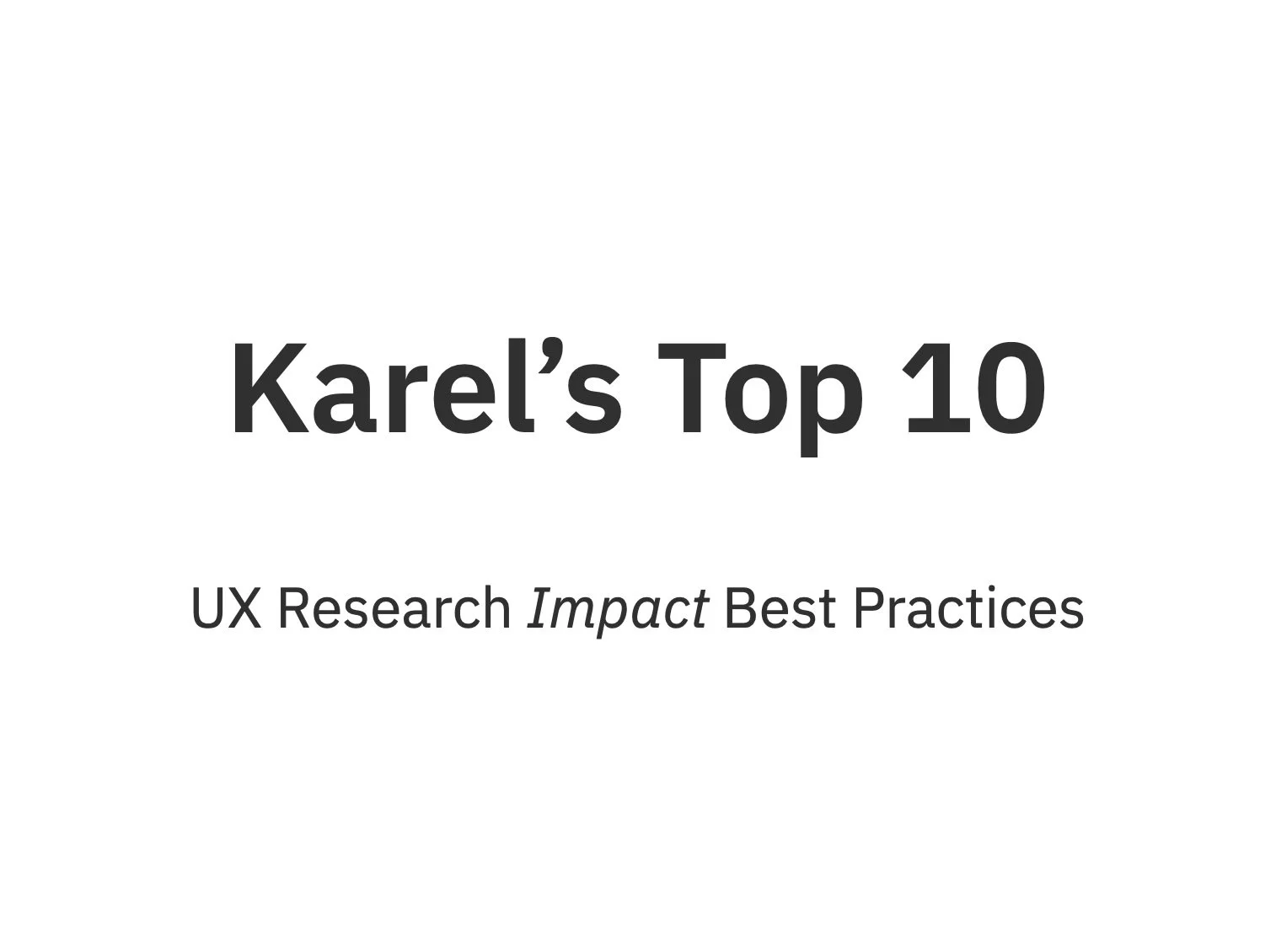I recently joined the advisory board of Food for Climate League, a remarkable nonprofit dedicated to making climate-smart eating the norm. The organization has a talented and passionate team of researchers, designers, and project managers committed to driving meaningful change. I was honored to be invited to lead an educational session for the team on a topic close to my heart: “Making Research the Foundation for Organizational Impact.”
During the session, I shared a set of best practices that I’ve found to be essential in having impact with research in the work I’ve done with numerous large companies, startups, and nonprofits. I promised the team I’d follow up with a written version, and I’m sharing it here in the hope that others might benefit as well.
So here’s my top 10 list:
Focus on the outcome first—not the study. Many researchers get too caught up in the details of the study they’re designing when they should first think about the intended impact that they could have with the research and then design the study accordingly. This may require a rethinking the question being asked to take a broader perspective.
When you're study is complete—you're only half done. The organization that hired you didn’t do so just to have you carry out studies. They hired you to use your research craft to have impact in order to make the organization more successful. So having completed a study doesn’t accomplish that—making sure that the insights from the study have impact on the organization’s deliverables does.
A higher response rate is better than more questions asked. When doing a survey, there is an inverse relation between the number of questions you ask and the response rate you’ll get. The more questions you ask, the fewer responses you’ll get. And that lower response rate means that you’re not getting a representative sampling of the target population.
If impact is your focus—one question may be preferable to many. It’s better to ask a single question that’s directly related to impact in a survey and then to follow up with some additional interviewing to further explore the additional questions you have. In fact, a simple unambiguous survey question is often the best way to get a representative high response rate while interviews are typically the preferred method of getting richer and more meaningful substantive information.
Plan your data analysis strategy before starting the study. Researchers, and even more often non-researchers doing research, will design and carry out the study and then think about how to analyze the data. Especially if you’re looking to have maximum impact from your research, you should plan your data analysis approach before you conduct the study. That approach will typically better inform the design of the study for organizational impact.
Run at the speed of the team—don't be a consultant that flies in. Researchers often get the requirements for a study, then carry out the study on their own, and then present the results to the team that requested the study. That approach runs the risk of the requirements having changed over time. A much better approach to ensure that your research has impact is to stay connected with the team requesting the research so that you can make necessary changes as requirements change. It may lead you to decide to use a different more time efficient research method or one that better addresses the needs of the team given where they are in the project.
Stay aligned with the team—get them involved in your study. Another reason to work closely with the rest of the team and even have them be present during some of the carrying out of the study is that it will ensure that everyone on the team better understands the insights from the research because they will have witnessed some of the research that led to them.
Accelerate your research with the effective use of AI. An additional way to ensure that your research has impact is to make the carrying out of it more efficient, effective, and timely. You can do that with the effective use of AI.
Empathize with the recipients/audience. Even though researchers champion empathizing with the users when conducting research for the design of a product or service, they often forget to do so when creating the product of their own work—the presentation of their research results. The recipients/audience are interested in the information that will have impact for their organization’s success so don’t start by presenting all the geeky sampling, methods, and data analysis details. Get to the point quickly regarding information that is most relevant to providing the insights for the organization. If there are question about methodology, you can have those in some backup slides.
You should be running a research program—not just individual studies. To have maximum impact, your research studies should form part of a larger research program. The studies should build upon each other and the research program as a whole should provide insight beyond the insights from individual point research studies.
While these are not exhaustive, I hope these best practices from my experience will help you to further hone your research practice.

